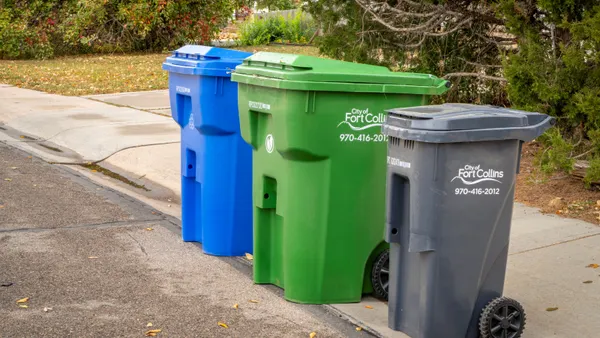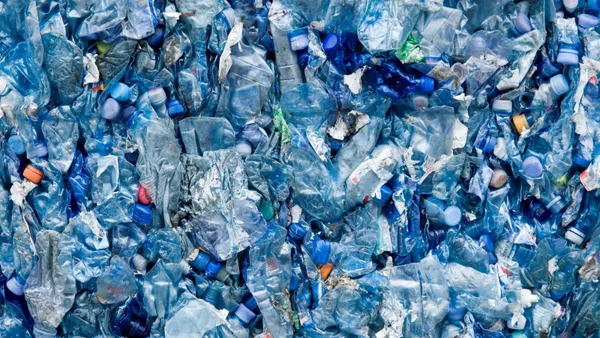Dive Brief:
- The Environmental Protection Agency (EPA) and The Recycling Partnership have released their 2016 State of Curbside Report that analyzed what's working in 465 municipal recycling programs across the country. The study found that the average U.S. household recycles 357 pounds of material per year and the average tip fee for municipal solid waste is $47 per ton.
- Among the communities that recovered more than 400 pounds per household, 96% of them used single-stream collection. Carts were used in 83% of these programs and residents were automatically enrolled in 93%. Some form of public action to incentivize recycling was also a common theme across these programs.
- Based on these findings, the report found a number of ways that communities can improve their local programs. Providing carts, using consistent messaging, developing material recovery facility infrastructure, having more consistent data reporting requirements and moving away from "opt-in" programs were among the top recommendations.
Dive Insight:
While this is not meant to be a representative sample of the estimated 20,000 incorporated communities in the U.S., it covers a broad range of programs in every state and offers a unique look at what is happening at the local level. Based on this research, the report's authors say that only 35-45% of potential recyclables are being collected with particular potential to do more in multi-unit buildings. They also say that a program's success does not seem to be dependent on whether it is run by public or private entities.
These findings follow the EPA's recent release of its own recycling report which found a 34.6% diversion rate for 2014 and also discussed the potential for using more standardized data collection methodologies. Multiple organizations have questioned the accuracy of these numbers in the past, leading to a push for states to try and get on the same page with some type of universal evaluation standard.
Better measurement will be key to identifying ways to improve local recycling programs, but as the report notes that is only one of multiple components that The Recycling Partnership plans to focus on. The organization continues to help municipalities fund new collection programs and has teamed up with the Sustainable Packaging Coalition to look at improving the quality of recovered material for new end markets. If the EPA chooses to keep focusing on this area under new leadership next year, there will be potential for even more improvements.









